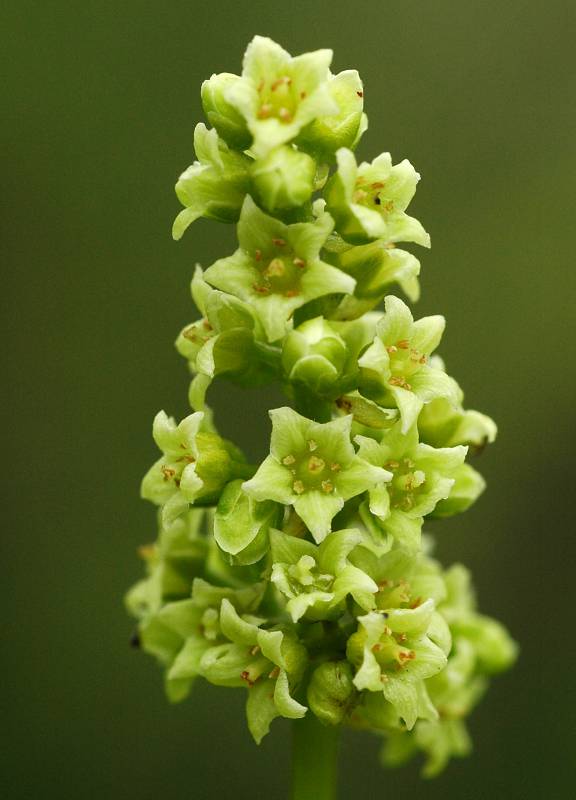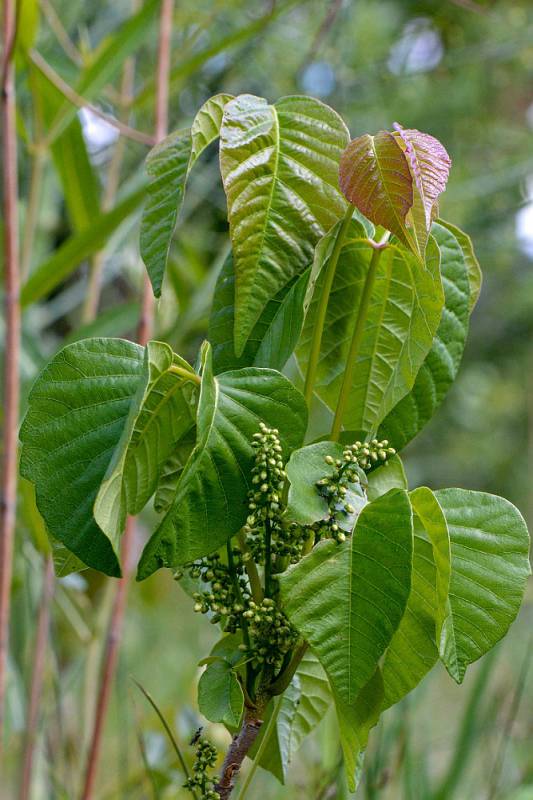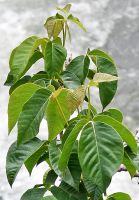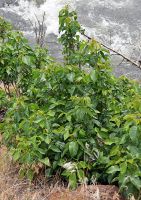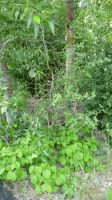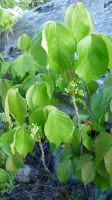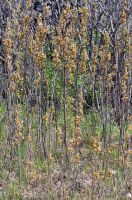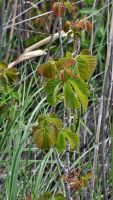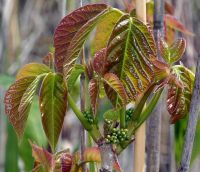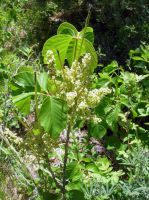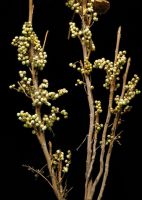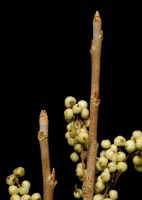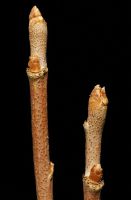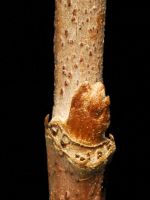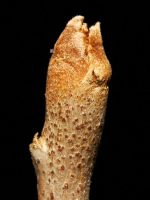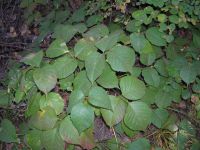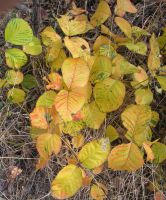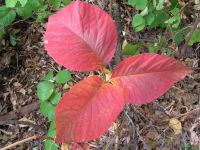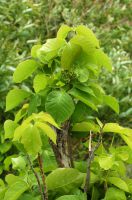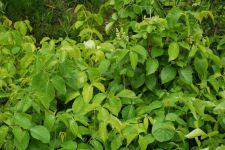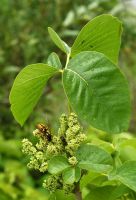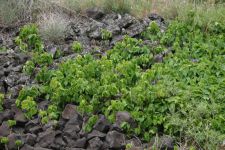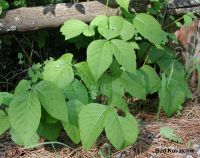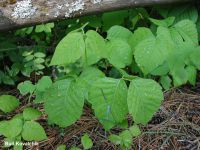Distribution: Occurring east of the Cascades crest in Washington; occurring throughout much of North America, except Alaska, California, southeastern U.S. and northeastern Canada.
Habitat: Generally in the lowlands and foothills and into the lower mountains in open areas or forest edges.
Flowers: April-July
Origin: Native
Growth Duration: Perennial
Conservation Status: Not of concern
Pollination: Bees
Somewhat pubescent shrub 0.5-2 m. tall.
Leaves trifoliate; leaflets broadly ovate, pointed, entire to shallowly lobed, 5-15 cm. long.
Inflorescence of congested, axillary panicles; flowers mostly imperfect, dioecious, 2-3 mm. long; calyx 5-parted, about half the length of the petals; petals 5; staminate flowers with 5 exerted stamens, the filaments attached to the rim of a fleshy, flat disk; ovary superior, style 1, stigmas 3.
Fruit drupe-like, glabrous, about 4 mm. long, white, with a greenish or yellowish cast.
Publication: Revis. Gen. Pl. 1: 153. 1891.
-
var. rydbergii – poison-ivy, western poison-ivy
 Occurring east of the Cascades crest in Washington; distributed throughout much of North America, except Alaska, California, southeastern U.S. and northeastern Canada.
Occurring east of the Cascades crest in Washington; distributed throughout much of North America, except Alaska, California, southeastern U.S. and northeastern Canada.
PNW Herbaria: Specimen records of Toxicodendron radicans in the Consortium of Pacific Northwest Herbaria database.
WA Flora Checklist: Toxicodendron radicans checklist entry.
OregonFlora: Toxicodendron radicans information.
E-Flora BC: Toxicodendron radicans atlas page.
CalPhotos: Toxicodendron radicans photos.
USDA Plants: Toxicodendron radicans information.

